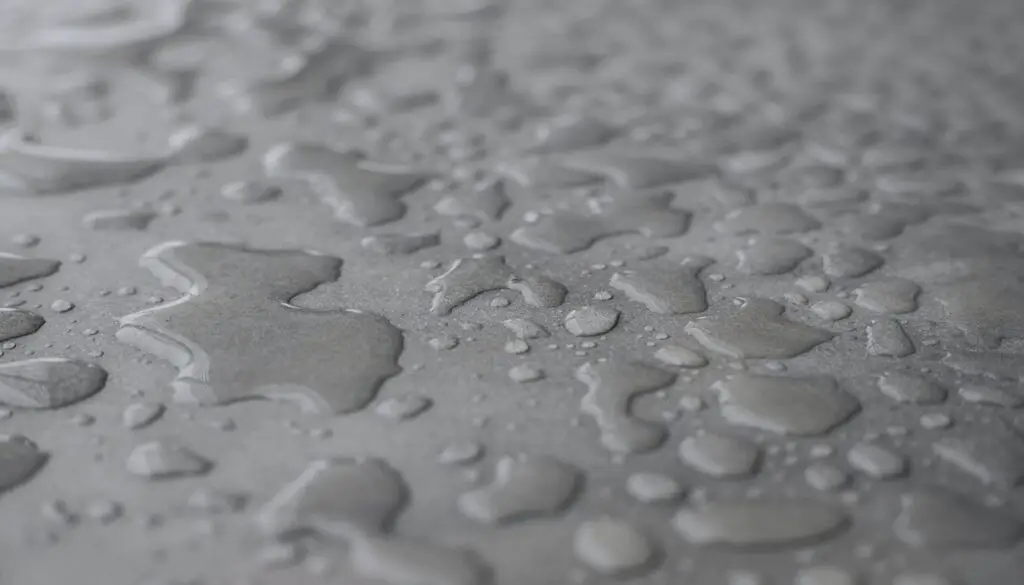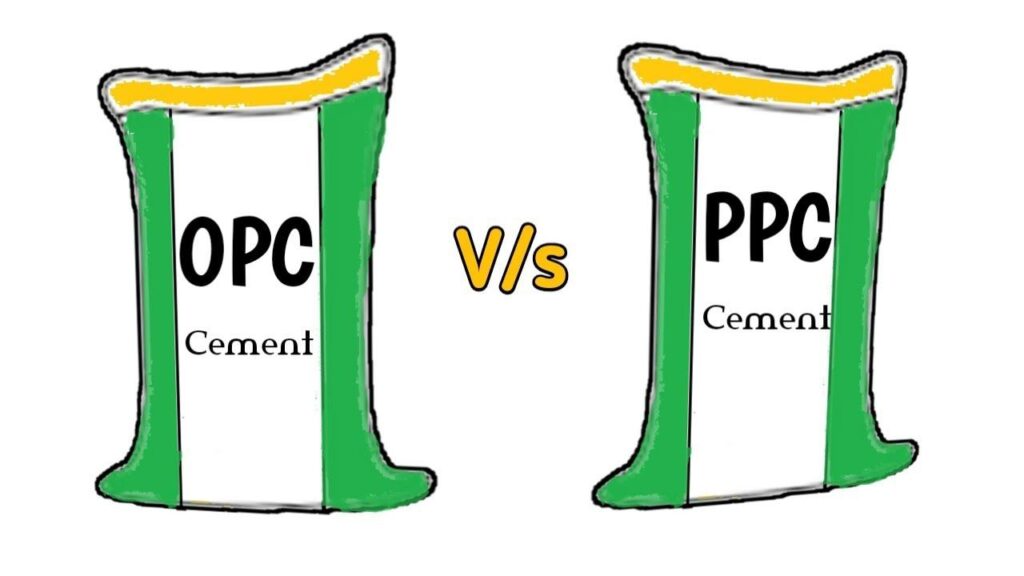Concrete waterproofing stands as an essential guard in the combat against structural deterioration. Exploring the realm of types of concrete waterproofing, one understands that ensuring the longevity of infrastructure involves a sophisticated selection from a variety of methods, tailored to fit specific needs and environments. Delving into the steps in concrete waterproofing, detailed preparation and application techniques materialize as pivotal actions, shaping the efficacy of the waterproofing process.
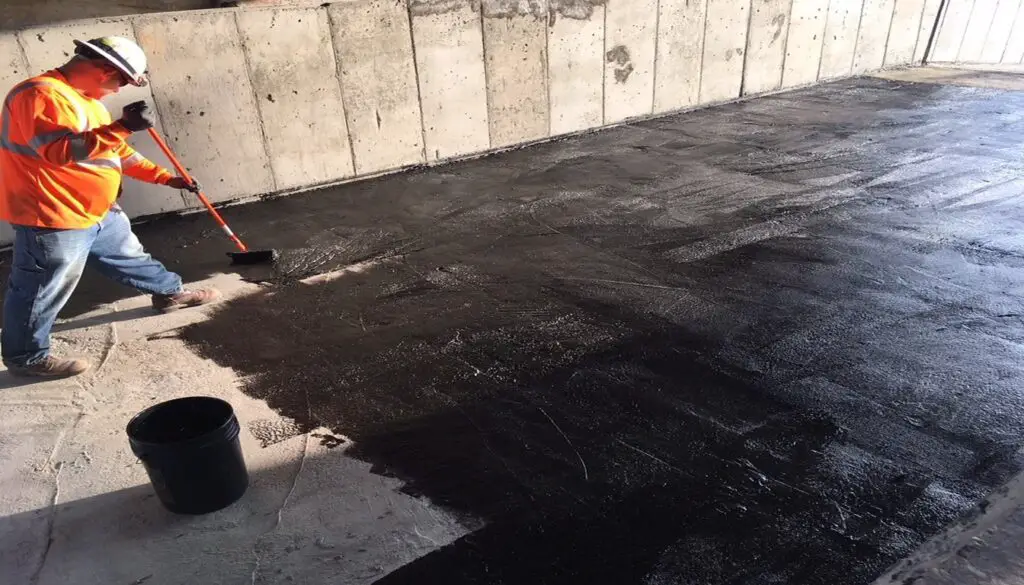
While the advantages of concrete waterproofing showcase a compelling case for its implementation, citing increased durability and prevention of common problems such as mold and leaks, it is also crucial to acknowledge the disadvantages of concrete waterproofing. This includes the potential for upfront costs and technical challenges that can arise during installation. This article endeavors to impart a comprehensive understanding of concrete waterproofing, tailoring a narrative that is both enlightening and fundamental for professionals and laypersons alike.
Key Takeaways
- Understanding of different types of concrete waterproofing methods and their unique benefits.
- Insight into the meticulous steps in concrete waterproofing that warrant effective application.
- Appreciation for the substantial advantages of concrete waterproofing, including enhanced structure longevity.
- Awareness of the disadvantages of concrete waterproofing, such as initial costs and potential for mishaps.
- A balanced perspective that empowers decision-making for safeguarding structures against water damage.
Understanding Concrete and Its Need for Waterproofing
In the realm of construction, concrete emerges as a foundational element. Known for its strength and versatility, it serves as the backbone of modern infrastructure. However, despite its robust nature, concrete’s porous attributes require protective measures against water ingress. Exploring the composition of this essential material unveils the reasons behind its necessity for waterproofing.
What Is Concrete?
Concrete is a composite material, a conglomerate of fine and coarse aggregates bonded together with a fluid cement that hardens over time. Its inherent durability and fire resistance make it a preferred choice for a variety of construction applications. The ability of concrete to be cast into different shapes enhances its popularity in architectural and engineering projects.
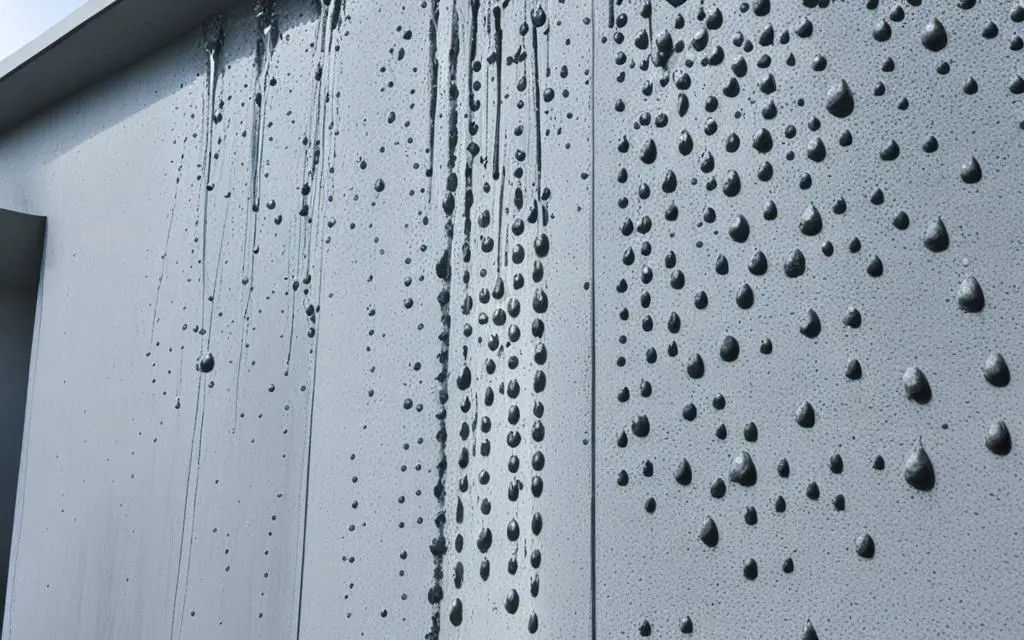
Why Does Concrete Need to Be Waterproofed?
The porous nature of concrete can be its Achilles’ heel; capillary pores and micro-cracks within its structure allow water to permeate, which can lead to structural damage over time. The necessity to waterproof concrete surfaces arises from the need to prevent detrimental effects such as cracking, internal corrosion of reinforcement, freeze-thaw cycling, and biological growth. Waterproofing extends the life of concrete structures, ensuring that they remain safe, functional, and aesthetically pleasing for years to come.
Waterproofing concrete is not merely a recommendation but a critical procedure in preserving the integrity of structures exposed to damp conditions and weathering. By doing so, we safeguard our infrastructures against the ravages of water damage, ultimately nurturing their longevity and durability—a testament to the axiom “an ounce of prevention is worth a pound of cure.”
Exploring the Types of Concrete Waterproofing
Concrete, being a porous material, is susceptible to water penetration and the resulting damage. To counteract these effects, various waterproofing strategies have been developed. Let’s delve into the specifics of each method, examining their unique properties and applications in the construction industry. Understanding these can assist in selecting the right approach for a given project.
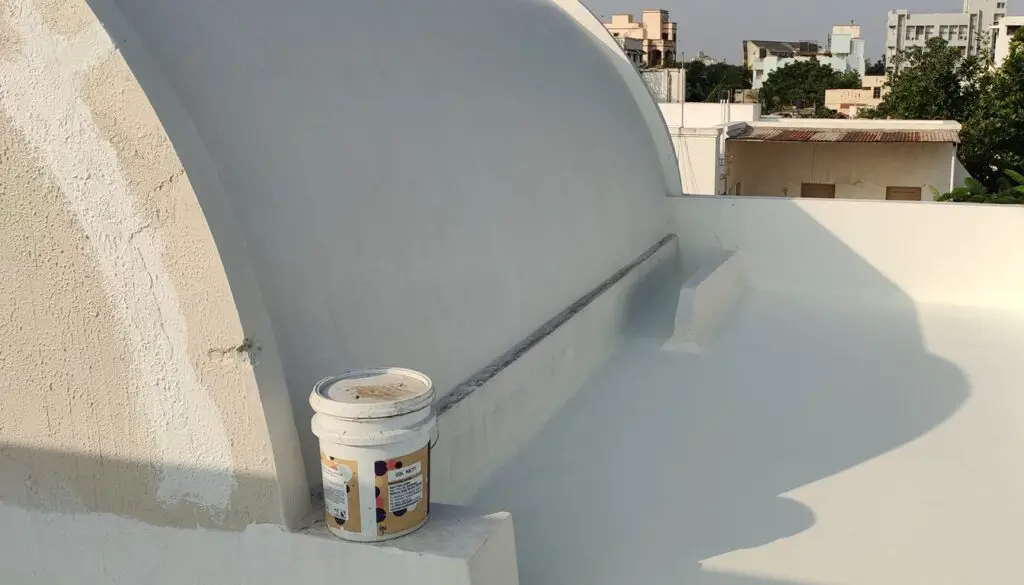
Cementitious Waterproofing is popular for its ease of application. This method includes a mix of cement and waterproofing admixtures, which when applied, furnish a rigid or semi-flexible waterproof barrier. It is particularly effective for internal wet areas such as bathrooms.
Liquid Waterproofing Membrane, comprising a primer coat and two topcoats applied by spray, roller, or trowel, offers a more flexible approach. The elastomeric layer it forms can stretch and return to its original shape, making it suitable for surfaces that might shift or crack.
Bituminous Coating, also known as asphalt coating, is excellent for waterproofing and a protective layer, especially on surfaces of concrete foundations. This coating is composed of bituminous-based products and polymers, protecting against moisture and vapors.
Bituminous Membrane waterproofing is a popular method for low-sloped roofs, consisting of self-adhesive sheets that bond to the surface. Its layered approach allows for thermal movement and provides long-lasting resistance to water.
Another pivotal category involves Crystalline Admixtures. These are added to the concrete mix to increase waterproofing properties. They work by forming crystalline structures that block the pores within concrete, significantly reducing permeability.
| Type | Application | Suitability | Performance in Diverse Conditions |
|---|---|---|---|
| Cementitious Waterproofing | Internal wet areas (e.g., bathrooms) | Areas with less likelihood of cracking or movement | Good for stationary concrete |
| Liquid Waterproofing Membrane | Roofs, decks, balconies | Surfaces that experience movement | High flexibility in temperature variations |
| Bituminous Coating | Foundations, external walls | Protective, damp-proofing | Effective against moisture; not for UV-exposed areas |
| Bituminous Membrane | Low-sloped roofs | Flat roofs prone to standing water | Excellent water barrier; adapts to thermal movement |
| Crystalline Admixtures | Mixed into concrete | Subterranean structures | Reduces permeability; good for varying water exposure |
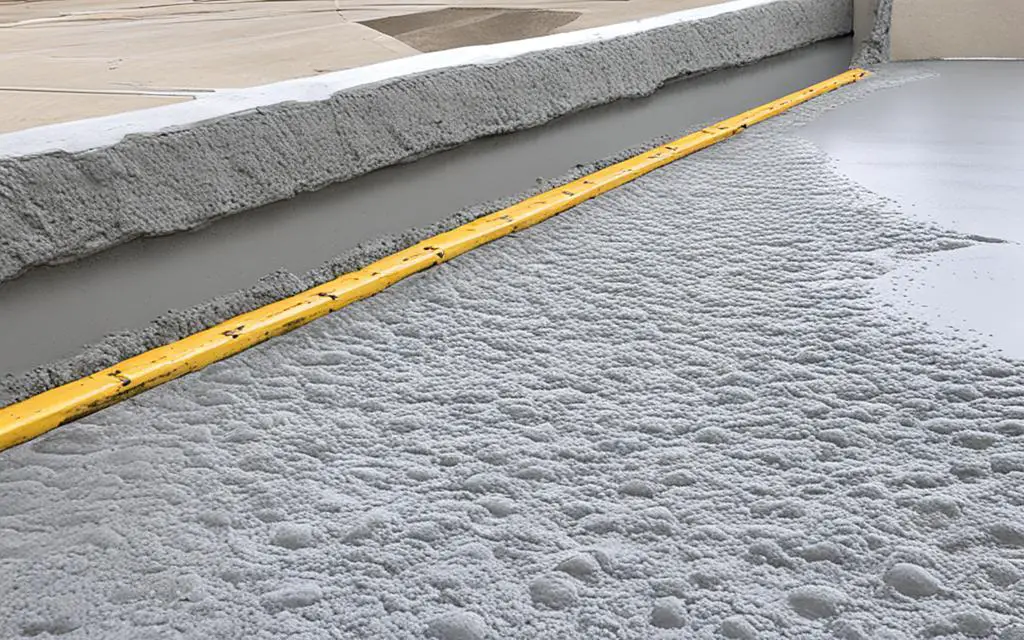
Each waterproofing type serves its purpose depending on the use-case scenario. Proper selection and application will determine the success of the waterproofing endeavor, providing a solid defense against the relentless pursuit of water to penetrate concrete structures.
Concrete Waterproofing Steps
Waterproofing concrete is an essential step in ensuring the durability of various structures, from residential buildings to commercial facilities. A methodical approach to waterproofing not only preserves the structural integrity but also prevents potential future damage caused by water ingress. Follow this detailed guide through the essential steps involved in waterproofing to achieve optimal results.
Step 1: Surface Preparation
Initiating the process with surface preparation is critical. This involves cleaning the concrete surface to remove any dust, grease, or existing coatings. Surfaces should be even and free of voids to enable the waterproofing products to adhere properly. It’s not uncommon to use pressure washing, abrasive blasting, or chemical etching as part of this stage.
Step 2: Application of Primary Coat
Following the surface prep, the application of the primary coat is performed. This coat ensures that the waterproofing membrane will bond adequately to the concrete. Use a high-quality primer specifically designed for the type of membrane being applied to prevent delamination or water tracking beneath the membrane.
Step 3: Unrolling the Membrane Sheets
Next, unrolling the membrane sheets across the prepared surface is a delicate process. Care must be exercised to lay the sheets flat, without air pockets or wrinkles, which could compromise the waterproofing efficacy. Overlapping edges must be aligned with precision to ensure a continuous barrier against moisture.
Step 4: Heating the Membranes
Heating the membranes is often essential for certain types of waterproofing systems. Especially in the case of torch-on membranes, heat application allows the material to adhere firmly to the surface and each other at the seams, essentially creating a monolithic barrier against water.
Step 5: Pressing the Membrane
The final essential step is pressing the membrane onto the concrete surface and its overlaps. This action ensures full bonding and removes any entrapped air that may cause future points of failure. Proper pressing techniques often include the use of rollers or other specialized tools designed to apply uniform pressure along the membrane.
While these steps offer a framework for waterproofing applications, it’s pivotal to adhere strictly to the guidelines and specifications provided by the membrane manufacturers. Quality assurance throughout each step will certify a lasting and effective waterproofing system.
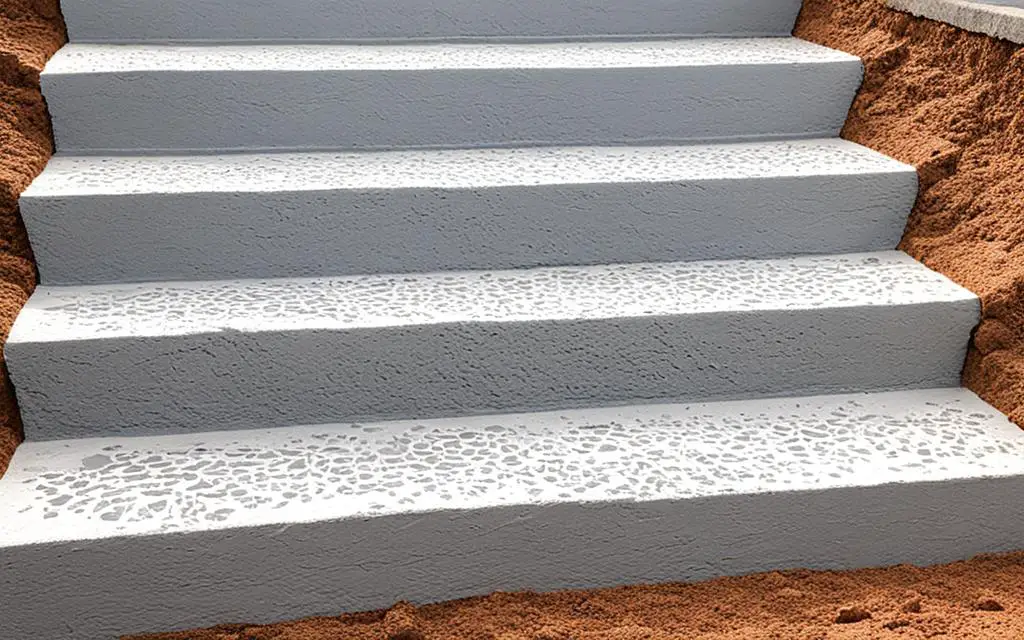
Evaluating the Pros and Cons of Concrete Waterproofing
Concrete waterproofing serves as a critical component in construction, aimed at preserving the structural integrity and longevity of buildings and infrastructures. A detailed examination of the advantages and potential drawbacks is essential for professionals and homeowners alike to understand the impact of waterproofing solutions.

10 Advantages of Concrete Waterproofing
The benefits of implementing a waterproofing system are numerous and spread across various aspects of a structure’s lifespan:
- Increased Structural Integrity: Waterproofing protects the rebar in concrete from corrosion, thereby enhancing the overall strength of the structure.
- Protection from Mold and Mildew: By preventing moisture ingress, waterproofing reduces the risk of mold and mildew development, which can harm health and aesthetics.
- Reduced Maintenance Costs: A well-executed waterproofing system decreases the frequency and severity of maintenance required over time.
- Prevention of Concrete Decay: It impedes the processes that lead to concrete decomposition, such as carbonation and chloride attack.
- Improved Air Quality: Dry interiors inhibit the propagation of air pollutants, ensuring better indoor air quality.
- Energy Efficiency: Waterproofed buildings are often more thermally stable, contributing to lower energy consumption for heating and cooling.
- Prevention of Water Damage: Waterproofing minimizes water ingress that can lead to structural and property damage.
- Longer Lifespan: Protecting the structural components extends the life expectancy of the building significantly.
- Increased Property Value: Waterproofing is a value-added feature that can increase the marketability and worth of a property.
- Peace of Mind: Knowing that your property is safeguarded against water damage offers considerable psychological comfort.
6 Disadvantages of Waterproofing
While there are significant advantages, one must also consider various disadvantages that might affect the decision to waterproof:
- Initial Investment Costs: The upfront cost for materials and professional installation can be substantial.
- Technical Complexity: Incorrect application by unskilled labor can lead to system failure and necessitate costly repairs.
- Potential for Damage During Construction: Waterproof membranes can be punctured or damaged during subsequent construction stages.
- Compatibility Issues: Some waterproofing products might not be compatible with existing building materials or other applied substances.
- Chemical Exposure: Certain waterproofing chemicals can be hazardous during application, requiring specialized safety precautions.
- Limited Durability of Some Systems: Not all waterproofing solutions are created equal; some may degrade over time and require reapplication or repair.
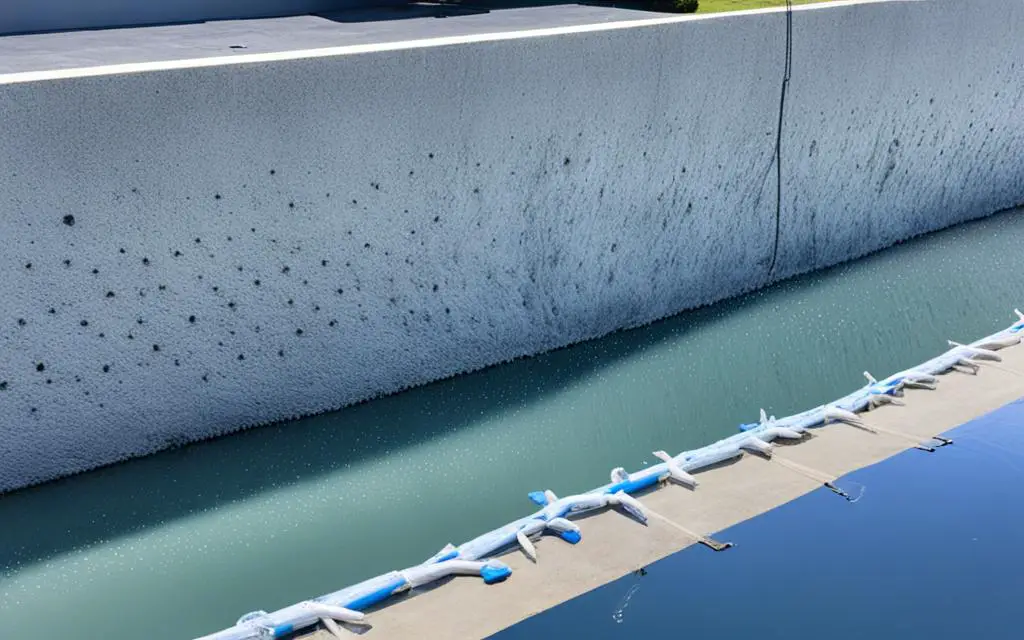
Conclusion
The thorough examination of concrete waterproofing throughout this article highlights its critical role in maintaining the structural integrity of buildings and infrastructure. As we have explored, concrete with proper waterproofing measures becomes a long-term structural safeguard, extending its lifespan and robustness. The insights presented underscore the truth that, despite the associated costs and meticulous processes, the application of waterproofing is a strategic investment rather than an expense.
Effective protection from water damage transcends beyond immediate waterproofing benefits to encompass far-reaching implications. From preventing the detrimental effects of moisture ingress to enhancing safety and reducing the prospect of costly repairs down the road, the advantageous impacts of waterproofing are clear. Professionals in the industry are called upon to apply their expertise, ensuring that every step from the selection of the appropriate waterproofing method to impeccable execution is conducted with precision.
In sum, concrete waterproofing stands as a prime factor in the pursuit of structural excellence. The diligence in applying such measures paves the way not only for preserving the aesthetics and functionality of constructions but also for fortifying the constructions against the vagaries of time and nature. As we move forward, let it be with the knowledge that the act of waterproofing is a defining component in the edifice of enduring constructions.
Happy Learning
Also, Read,
FAQ
What is concrete?
Concrete is a construction material composed of cement, aggregate (typically gravel and sand), and water. The mixture hardens over time to form a rock-like substance, which is utilized extensively in building and construction works due to its strength and reliability.
Why does concrete need to be waterproofed?
Concrete needs to be waterproofed because although it is durable, it is also porous. Water can seep through its pores and cause damage such as cracking, corrosion of reinforcement bars, and mold growth. Waterproofing concrete enhances its durability, protects it from damage, and prolongs its lifespan by preventing water infiltration.
What are the types of concrete waterproofing?
Types of concrete waterproofing include cementitious waterproofing, liquid waterproofing membranes, bituminous coatings, bituminous membranes, admixtures, and crystalline admixtures. Each type serves a specific function and is suitable for varying conditions and requirements in the construction industry.
What are the steps involved in waterproofing?
The steps involved in waterproofing typically consist of surface preparation, application of the primary coat, unrolling and positioning membrane sheets, heating the membranes for adhesion, and pressing the membrane into place to ensure it bonds securely to the surface.
What are the 10 advantages of waterproofing?
The 10 advantages of waterproofing include: enhanced structural integrity, prevention of water damage, mitigation of mold and mildew growth, reduced repair and maintenance costs, preservation of property value, increased safety, elongated lifespan of the structure, improved comfort and hygiene for occupants, environmental protection from harmful leakages, and prevention of harmful chemical attacks on concrete.
What are the 6 disadvantages of waterproofing?
The 6 disadvantages of waterproofing include the potential high initial costs, complexity of the application process, necessity for professional expertise, risk of improper installation, ongoing maintenance requirements, and the possibility of selecting inappropriate waterproofing methods for certain conditions, which can result in ineffective protection.

